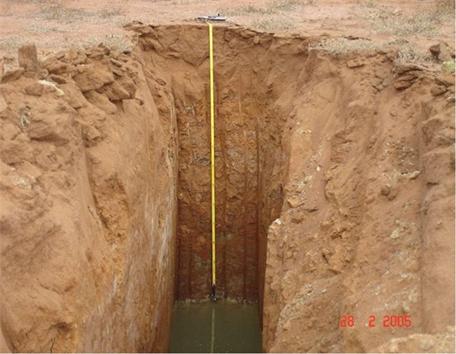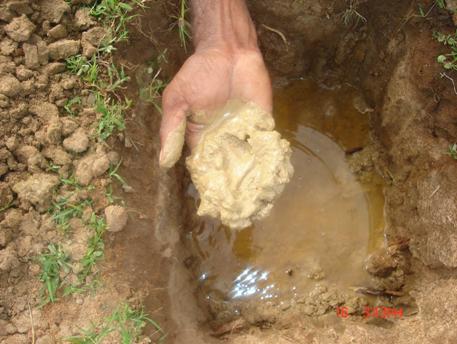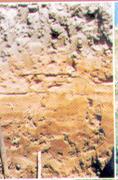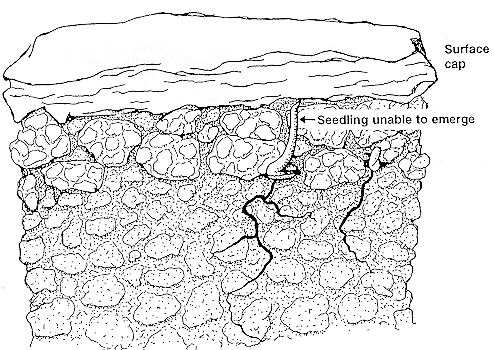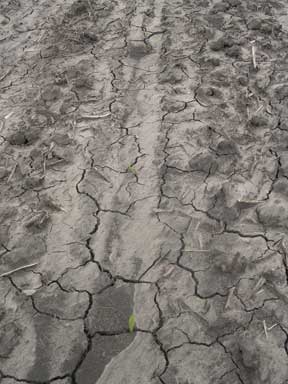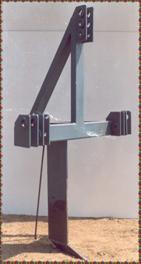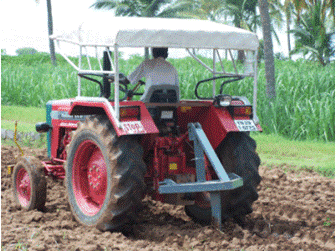SOIL RELATED CONSTRAINTS AND THEIR MANAGEMENT
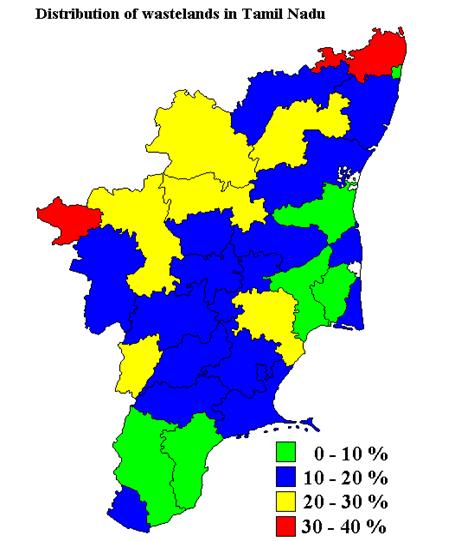
A constraint free soil environment is very important for achieving higher food production. The major soil constraints affecting the crop production in Tamil Nadu are
a) Chemical constraints : salinity, sodicity, acidity and nutrient toxicities
b) Physical constraints : high or low permeability, sub soil hard pan,
surface crusting, fluffy paddy soils, sandy soils etc.
Characteristics of Saline, Saline - Sodic and Sodic Soils
Soil |
pH |
EC (dS m-1) |
ESP |
Saline
Saline - Sodic
Sodic |
< 8.5
< 8.5
> 8.5 |
> 4
> 4
< 4 |
< 15
> 15
> 15 |
1. Saline soils
- Saline soils are characterised by higher amount of water soluble salt, due to which the crop growth is affected.
- For these soils with electrical conductivity of more than
4 dS m-1, provision of lateral and main drainage channels of 60 cm deep and 45 cm wide and leaching of salts could reclaim the soils.
- Application of farm yard manure at 5 t ha-1 at 10 - 15 days before transplanting in the case of paddy crop and before sowing in the case of garden land crops can alleviate the problems of salinity.
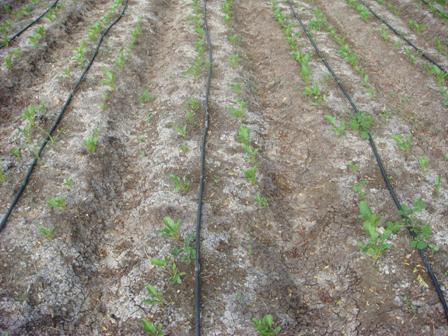
2. Sodic soils
Sodic soils are characterised by the predominance of sodium in the complex with the exchangeable sodium percentage exceeding 15 per cent and the pH more than 8.5.
Reclamation of sodic soils
-
Plough the soil at optimum soil moisture regime
-
Gypsum requirement based gypsum application
-
Impound water
-
Provision of drainage for leaching out the soluble salts
-
In situ incorporation of green manure at 5 t ha-1
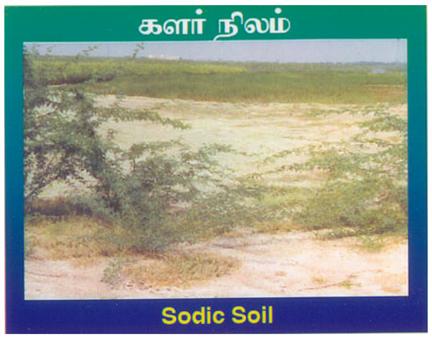 |
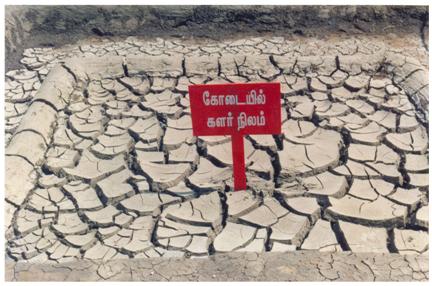
Sodic soil in Summer season |
| |
|
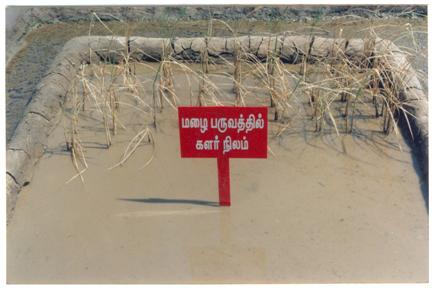
Sodic soil in rainy season |
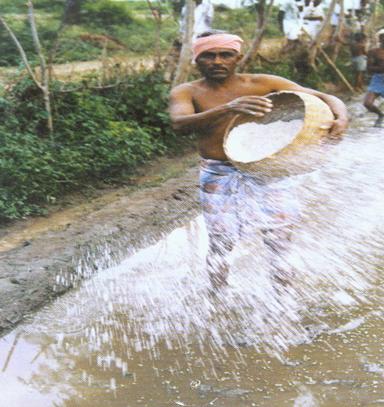
Gypsum Application |
| |
|
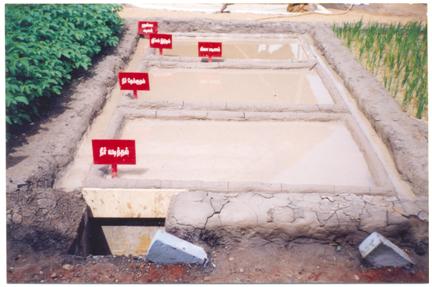
Impounding water and providing drainage |
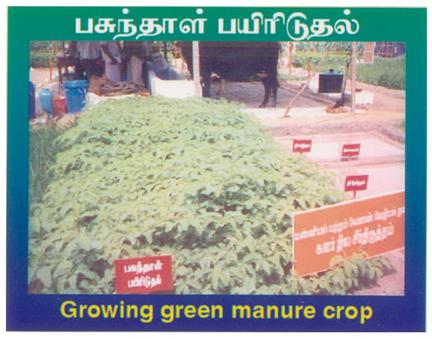 |
| |
|
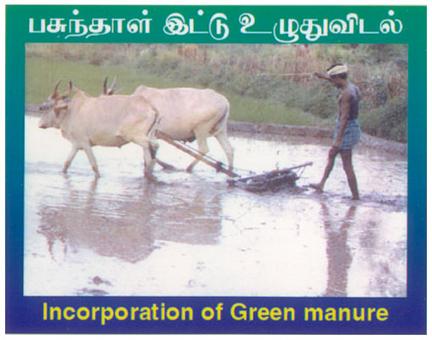 |
3. Acid soils
Acid soils are characteristically low in pH ( < 6.0). Predominance of H + and Al3+ cause acidity resulting in deficiency of P, K, Ca, Mg , Mo and B.
These soils are prevalent in
a) Hilly tracts of Ooty, Kodaikkanal and Yercaud
b) Laterite soils of Pudukkottai, Kanyakumari etc
- Application of lime as per the lime requirement test uniformly by broadcast and incorporation is recommended.
- The alternate amendments like dolomite, basic slag, flue dust, wood ash, pulp mill lime may also be used on lime equivalent basis.
Lime Requirement (tons of CaCO3/acre)
pH of soil buffer suspension |
Lime requirement to bring the soil to indicated pH |
pH 6.0 |
pH 6.4 |
pH 6.8 |
6.7
6.6
6.5
6.4
6.3
6.2
6.1
6.0
5.9
5.8
5.7
5.6
5.5
5.4
5.3
5.2
5.1
5.0
4.9
4.8 |
1.0
1.4
1.8
2.3
2.7
3.1
3.5
3.9
4.4
4.8
5.2
5.6
6.0
6.5
6.9
7.4
7.8
8.2
8.6
9.1 |
1.2
1.7
2.2
2.7
3.2
3.7
4.2
4.7
5.2
5.7
6.2
6.7
7.2
7.7
8.2
8.6
9.1
9.6
10.1
10.6 |
1.4
1.9
2.5
3.1
3.7
4.2
4.8
5.4
6.0
6.5
7.1
7.7
8.3
8.9
9.4
10.0
10.6
11.2
11.8
12.4 |
4. Iron and Aluminum toxicity
These are characterized by the presence of higher concentration of Fe 2+ and Al 3+ , more specifically in flooded soils. Prevalent in Kanyakumari and Pudukkottai Districts. ( pH 4 – 6 )
- Application of lime as per the lime requirement along with the recommended dose of NPK.
- Application of organic manure will suppress the toxicity.
For ` Ela ` soils of Kanyakumari district (Alfisols, pH : 4-5),. application of lime as per lime requirement with recommended NPK + foliar spray of 0.5 % ZnSO4 + 0.2% CuSO4 +1% DAP + 1% MOP thrice during AT to PI will help to over come the problem in rice. Based on the screening tests, the rice cultivars of the region have been rated for their tolerance to Fe toxicity
Highly susceptible
Mod. susceptible
Less susceptible |
: : : |
ADT 36
ADT 42, IR 50, CORH 1
TPS 1, ASD 16 & 18, IR 64, JJ 92, TKM 9, CO 37 & CO 41 |
5. Fluffy paddy soils
They are characterised by low bulk density of the topsoil resulting in the sinking of farm animals and labourers as well as poor anchorage to paddy seedlings.
- Such soils can be reclaimed by, passing of 400 kg stone roller or oil drum with sand inside eight times when the soil is in semi dry condition along with addition of lime @ 2t ha-1 once in three years.
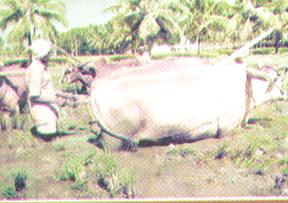
Fluffy paddy soil |
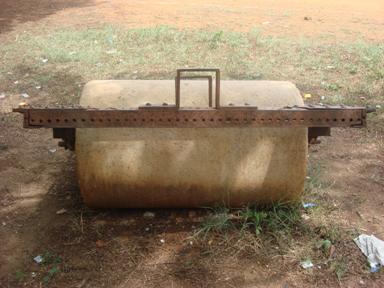
400 kg stone roller |
6. Sandy soils
Sandy soils are containing predominant amounts of sand resulting in higher percolation rates and nutrient losses.
- Compacting the soil with 400 kg stone roller or oil drum with stones inside eight times at proper moisture level once in three years could reduce the percolation losses.
- Addition of tank silt for coastal sandy soils is recommended for enhancing their productivity.
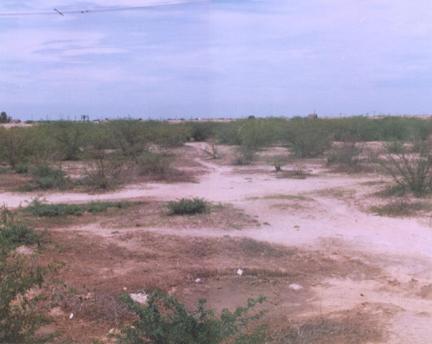
Sandy soil
7. Hard pan soils
Hard pan occurs in red soil areas below 15 cm depth due to the movement of clay and iron hydroxides and settling at shallow depth, preventing the root proliferation.
These soils can be reclaimed by
- Chiselling the soils with chisel plough at 0.5 m interval first in one direction and then in the direction perpendicular to the previous one, once in three years.
- Application of FYM or composted coir pith at 12.5 t ha-1could bring additional yield apart from getting longer residual effect.
8. Surface crusted soils
The soils having weakly aggregated soil structure are easily broken by the impact of rain drops resulting in the formation of clay crust at the soil surface.
The clay pan prevents the emerging seedlings and arrest the free exchange of gases between the soil and atmosphere.
- The surface crust can be easily broken by harrowing or cultivator ploughing.
- Surface crust formation can be prevented by improving the aggregate stability by the application of lime or gypsum at 2 t ha-1 and FYM at
12.5 t ha-1.
- Retaining crop residues on the surface as a protective cover.
9. Heavy textured clay soils
The clay soils are containing major amounts of clay fraction resulting in the poor permeability and nutrient fixation.
Such soils can be reclaimed by
- Addition of river sand at 100 t ha –1.
- Managed by deep ploughing the field with mould board plough or disc plough during summer to enhance the infiltration and percolation.
10. Low permeable black soils
- Application of 100 cart loads of red loam soil.
- Deep ploughing the field with mould board plough or disc plough during summer enhances the infiltration and percolation .
- Application of FYM , composted coir pith or pressmud at 25 t ha-1 per year will improve the physical properties and internal drainage of the soil
11. High permeable red soils.
- Application of tank silt or black soil at 25 t ha-1 per year along with FYM , composted coir pith or pressmud at 25 t ha-1.
- Deep ploughing the field with mould board plough or disc plough during summer to improve the water holding capacity of the soil
Package of Practices for Chisel Technology
The occurrence of hard pans at shallow depth is the most prevalent soil physical constraint in soils. The agricultural crops are denied of the full benefits of the soil fertility and nutrient use due to this constraint.
The sub-soil hard pans are characterised by high bulk density (1.8 mg m-3), which in turn lowers infiltration, water storage capacity, available water and movement of air and nutrients, with concomitant adverse effect on the yield of crops. This problem is predominantly present in six districts of Tamil Nadu viz., Coimbatore, Erode, Dharmapuri, Tiruchirappalli, Madurai and Salem particularly under rainfed farming affecting a total of 3.8 lakh hectares of land.
Technology
Plough the field with chisel plough at 50 cm interval in both the directions viz., horizontally and vertically.
Chisel plough is a heavy iron plough which goes up to 45 cm depth, thereby shatters the hard pans. It is usually drawn by the tractor.
- Spread 12.5 t/ha of FYM/pressmud/composted coir pith evenly on the surface.
- Give two ploughings using a country plough for incorporating the added manures.
- The broken hard pan and incorporation of manures make the soil to conserve more moisture
Vegetative barriers for soil moisture conservation
For better in situ moisture conservation in drylands of Vertisols, raise vegetative barriers of vettiver or lemon grass across the slope and along the contours at 0.5 m vertical interval.
Deep ploughing in rainfed cotton (Chisel ploughing)
In clay loam rainfed soils where there is occurance of hard pan, the infiltration rate, water holding capacity, root proliferation and nutrient uptake is affected ultimately resulting in poor yield.
Chisel ploughing one way at a depth of 40 - 50cm with 50cm interval once in three years in rainfed soils was found to increase the root proliferation and soil moisture retention (24-30%) thereby it increases the cotton kapas yield by 25% over tiller ploughing twice.
Chisel ploughing (at a depth of 40 - 50cm) |













